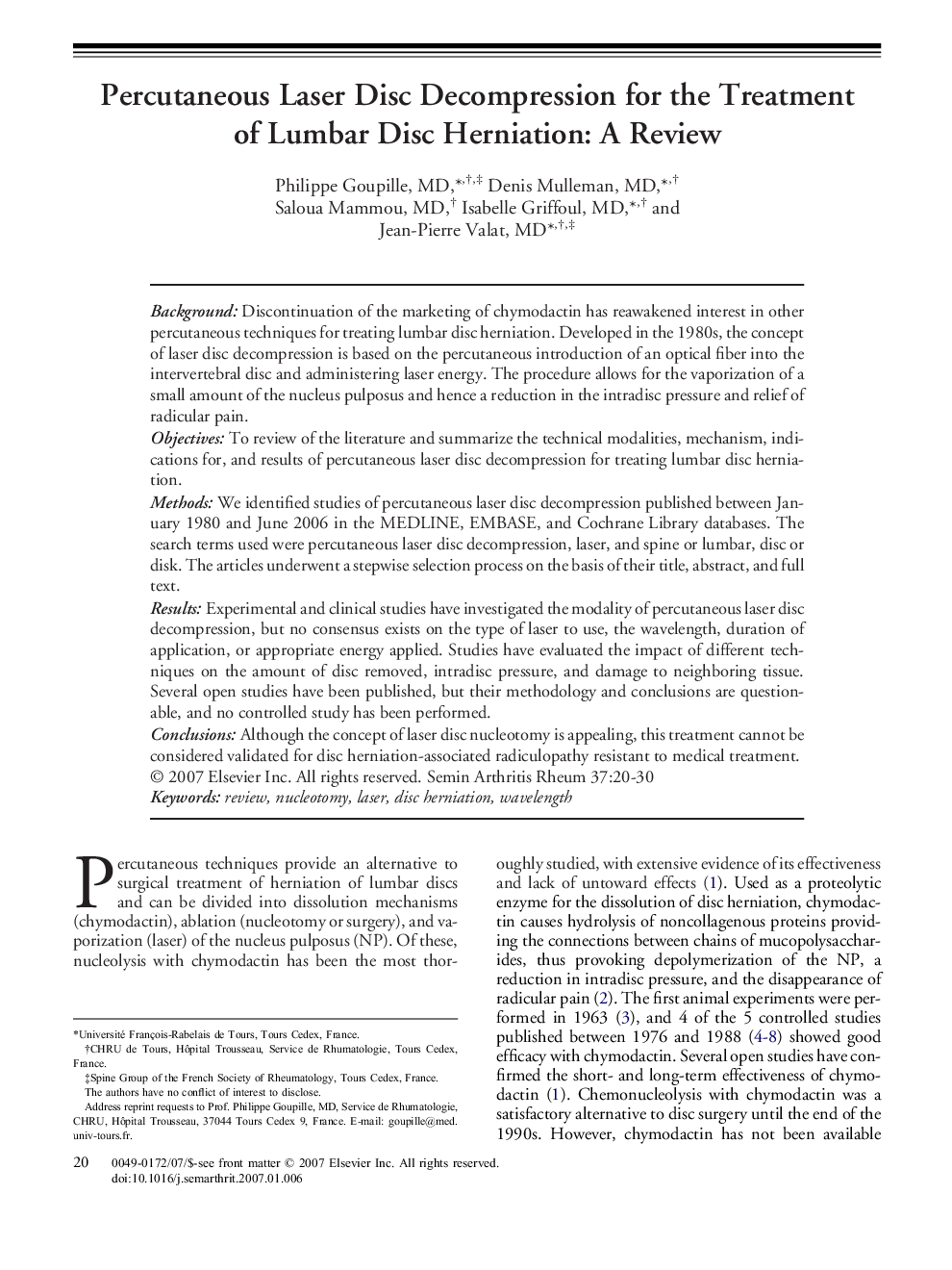| Article ID | Journal | Published Year | Pages | File Type |
|---|---|---|---|---|
| 2771841 | Seminars in Arthritis and Rheumatism | 2007 | 11 Pages |
BackgroundDiscontinuation of the marketing of chymodactin has reawakened interest in other percutaneous techniques for treating lumbar disc herniation. Developed in the 1980s, the concept of laser disc decompression is based on the percutaneous introduction of an optical fiber into the intervertebral disc and administering laser energy. The procedure allows for the vaporization of a small amount of the nucleus pulposus and hence a reduction in the intradisc pressure and relief of radicular pain.ObjectivesTo review of the literature and summarize the technical modalities, mechanism, indications for, and results of percutaneous laser disc decompression for treating lumbar disc herniation.MethodsWe identified studies of percutaneous laser disc decompression published between January 1980 and June 2006 in the MEDLINE, EMBASE, and Cochrane Library databases. The search terms used were percutaneous laser disc decompression, laser, and spine or lumbar, disc or disk. The articles underwent a stepwise selection process on the basis of their title, abstract, and full text.ResultsExperimental and clinical studies have investigated the modality of percutaneous laser disc decompression, but no consensus exists on the type of laser to use, the wavelength, duration of application, or appropriate energy applied. Studies have evaluated the impact of different techniques on the amount of disc removed, intradisc pressure, and damage to neighboring tissue. Several open studies have been published, but their methodology and conclusions are questionable, and no controlled study has been performed.ConclusionsAlthough the concept of laser disc nucleotomy is appealing, this treatment cannot be considered validated for disc herniation-associated radiculopathy resistant to medical treatment.
